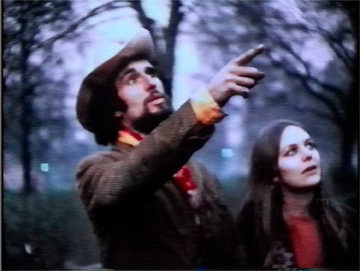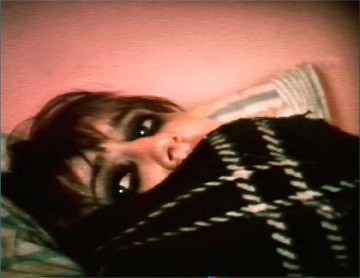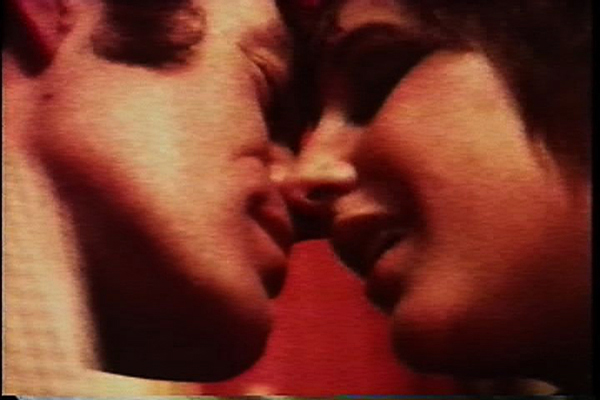DOPE *1968* a film by Diane Rochlin (Flame Schon) and Sheldon Rochlin
I just finished watching Sheldon and Diane Rochlin's powerful 1968 film "DOPE." It documents a unique world and time through the lens of London 1967. There was an international cabal at that time of artists, junkies, hippies and other unclassifiable characters on the periphery that fueled a a new world order before that became a term for something sinister. The zeitgeist of sex, drugs and rock and roll was just a manifestation of something deeper. And because this something was partially about testing the limits of limits, it was bound to get out of control. A candid and intimate view of London at the height of the ‘60‘s, when “the world (was) embracing a new consciousness” as someone in the film puts it, we see brief appearances by Marianne Faithfull, “Doctor Robert”, Chet Helms, the exterior of Alex Trocchi’s Karma Sigma, the boutique “Granny Takes a Trip”, The Roundhouse, UFO, live footage of legendary English bands, the first macrobiotic restaurant in London and a film screening at Better Books.
As it’s central focus, “DOPE” follows a waifish girl named Caroline around London with her friends, who are mostly concerned with shooting up. They spend their hours in a kind of spacey playgroup, listening to music, sometimes making art, dancing to records, strolling through the park and staring at the moon. There is a naive charm to their wide-eyed openness to the next beautiful thing, the next sensory pleasure. But a repetitive hunt for the next fix or new drug cocktail becomes their primary occupation. Witness Caroline’s initial guilessness about her explorations. Essentially, we see her questioning a friend about the nuances of different drug states, for example, what cocaine feels like and can he get her some. What begins as occasional use ultimately becomes a full-blown addiction. Caroline’s curiosity is transformed into an urgent preoccupation which triggers a series of sordid negotiations. Standing inside a phone booth, we see her self-respect slowly erode as she persists in trying to obtain what she needs from her sister, Prue who lives nearby with her junkie boyfriend, Tony. Prue tells her she’s expecting friends for dinner. Caroline’s questions and insistence poignantly reveal not only her desperation but also her sense of relative insignificance in her sister’s life. In the end she convinces her and goes to get what she needs. During her visit Tony discusses the ins and outs of treatment centers and the excellent smack to be had through these programs. It should be noted that at that time, heroin was legal in England with a prescription. Junkies were technically not a criminal class and there was a continuum of all types and frequencies of drug use. A previous title for this film was “Boots at Midnight” which refers to the chemists shop where junkies would gather at midnight to fill their prescriptions. Among the other characters are Casey and his girlfriend Diane, who is pregnant. We follow them as they try to get a van together in which they can live & travel. Casey gets into heroin following in the steps of his psychic mentor Geno an accomplished musician who died a gruesome death at a young age. His tale figures prominently in the film, told by one of the voiceovers. We also hear Geno singing "Cocaine"as a refrain throughout the film. Another couple. Chris and Sharon and their baby Maria, are from San Francisco. We see Chris on the phone trying to set up deals in an unnamed business that he’s involved in. Seeming more middle class than the others, at least on the surface, they have a house in Fomenterra, and Sharon’s main occupations are buying things, taking acid and dancing at Pink Floyd concerts.
Diane Rochlin, who now goes by the name Flame Schon, is a master of editing and in “DOPE” creates a dynamic tension between the characters and their surroundings. Sound and image combine in a multi-layered texture, creating a third dimension within the frame. A heightened disorientation and sensory flooding engages the viewer in the characters' altered states. To the filmmakers’ credit, this is achieved without the usual shenanigans used in many preceding films, some of which have become something of a nostalgic joke beginning with the black and white spirals of Lost Weekend. More than "Pull My Daisy" in color, it reaches even further, and by the end of the film the drugs have transmuted the innocence of these young dreamers and seekers into something much darker. The stoned intellectual games of Corso, Ginsberg and Rivers were played raucously and with much humor, while the games here have a more desperate frenzy and the humor always has a tinge of irony.
The Rochlins, who incidentally were friends with the five main characters and lived with them during the shoot, were silent and invisible nearly 100% of the time, and spare us the interference of a point of view. This allows wide birth to decide for oneself whether these are spoiled children or enlightened beings. At times they appear shallow and self-consumed, at others, poignantly courageous in their willingness to go to the edge for no other reason than the journey. Of course 1967 was a time when anything was game among a large peer group. The counter-culture had become so large that it had become it's own subsystem of the larger hierarchy, with the same constructs of power and status. Power is as universal as birth and death. The economics of the drug world were no different than any other capitalist engine and supply was tied to the junkie’s demand even in London at a time when one could register and obtain clean needles and all the smack necessary to avoid cold turkey. At the same time, there was still a stigma and even in this comparatively liberal view of drug addiction there were consequences. The authorities, most importantly the medical profession, might think you were malingering, not admit you to an emergency room and leave you to die at home. Geno Foreman, whose untimely death is described in all it’s grim details by his friends, was a known and respected musician who had played with Bob Dylan among others and was a registered addict. Writhing in agony and throwing up his own shit because of an undiagnosed stomach obstruction, the hospital refused to admit him. After a few days, with his frantic wife doing all she could to no avail, he died a horrible death. Nevertheless, life among his friends went on. The junkie’s life was deemed better at a time when anything "outlaw" was good and anything "conventional" was bad. Conventional logic was you took care of your body and mind and believed "everything in moderation." So, it was simply a matter of doing the opposite just to prove you could get away with it. Each scene brought back a time when apartments and urban park meadows smelled like rose incense, patchouli oil and hashish. Everyone had good skin. You could be a junkie and be kind of beautiful about it, teeth still in your head, death far enough in the future that it might seem romantic to see how far before you destroy yourself, maybe die young and become legend. It could be justified if you called yourself an artist so almost everybody had a sketchbook or notebook with druggy scribblings or some stringed thing that they plucked badly.
One of the most disturbing aspects of this unfolding story is the presence of children. Their presence makes a strong impact on anyone who’s had the fortune to have one. I was once offered junk by a friend, but envisioned my 8 year old son waiting at home and decided against it. For me, the babies in this film, parents shooting up as casually as they changed diapers, seemed to be standing dangerously close to the third rail. Watching these infants and toddlers in the punctured arms of their parents made me sad, angry and afraid. I couldn't help but wonder what became of them. And their parents.

Many of the people in this film seemed to move through a world of their own making, managing to keep themselves in drugs, real estate and plane fare. Some were genuinely broke or worked at menial jobs, but little of this is emphasized in the film. The insularity of their social milieu was most striking during one sequence when Caroline spends an afternoon in the country walking and conversing with an old upperclass man at a fox hunt who has much to say about “The Jews.” He tells her the fox doesn't much mind and that when he ‘was in Egypt you could “give a wog a kick up the arse” and nothing to pay.” This qualifies as one of the funniest scenes in the film. In one conversation with the filmmaker, Sharon speaks about her and Chris’s house on Formenterra, a tiny island a short ferry ride from Ibiza. It was only $8 a month. This was during Franco's Spain when you could buy a decent bottle of wine for fifty cents. She paused, giggled and then said that she wanted to rent another house on the island and another and another and just spend five years going from one house to the other.
I knew many people like the ones in this film and kept expecting to see someone I knew appear in the frame. Some of them died. Some of them lived exhausted boring lives. Some of them got straight and did great things. Some of them stayed high and did even greater things. When writing this, I took another look at "Pull My Daisy." What struck me was the joy. The stoned playfulness of a generation earlier had a different shade. There was a candid hedonism, a spiritedness in these poets, musicians and painters of New York bohemians in the 1950’s that seemed to be missing in the lives of Caroline and her friends. Perhaps it was the romance of this earlier time that inspired the generation of Hippies depicted in “DOPE”. Much of their carousing seemed a desperate attempt to fulfill a fantasy about themselves. But both films are exquisite documents of a time and place: films that never get old, that reveal new truths when watching them for the third, forth, or even, tenth time. “Dope” is the chronicle of a time when many of us thought that this is where the world would find its soul and everything would always be the way it was and the way it was was eternal and we were immortal.
“DOPE” was shown at the Whitney Museum of American Art in 1975. It has been screened at different times at festivals or special screenings and has become an underground classic, something of a collector’s item among its cult following. Unfortunately, you can only see it in its entirety on DVD. It can be ordered from Flame Schon directly at: themoviedope@gmail.com Official website: http://www.dopethemovie.net/
 “DOPE” will be screened in full on May 30th, 2010 at the
HIP DEATH GODESS FESTIVAL in London.
(Read an excerpt about the festival from the Shindig Magazine article below)
“DOPE” will be screened in full on May 30th, 2010 at the
HIP DEATH GODESS FESTIVAL in London.
(Read an excerpt about the festival from the Shindig Magazine article below)
A celebration of the psychedelic and surreal through live performance, film and projection will take place at the end of May.Hip Death Goddess features live music sets from contemporary bands Wolf People and The Lucid Dream, plus a selection of avant-garde films by Kenneth Anger and a screening of the unreleased 1968 documentary “DOPE” by Sheldon Rochlin and Diane Rochlin (Flame Schon). There will also be an invocation of the Hip Death Goddess - with dances performed by Ultra Violet Violence conjuring manifestations of the subconscious mind. The event is hosted within the Bedford's circular ‘Globe Theatre', lit by the Bardo Light Show's hand-manipulated oils and chemical slides, and accompanied by an ongoing psychedelic soundtrack from the last 50 years. Sunday 30th May, 3pm-11pm, Globe Theatre at The Bedford, 77 Bedford Hill, Balham SW12 9HD. Train/tube: Balham. £8 Entry. For further information about this event email:info@hipdeathgoddess.org








